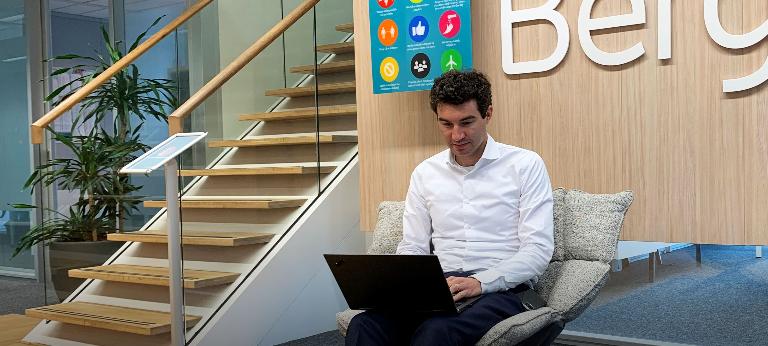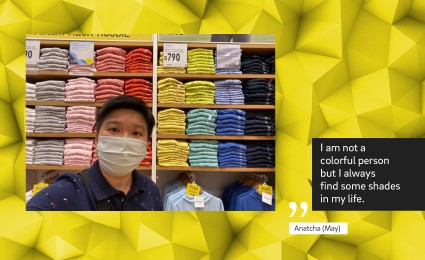

curious.
Rob: a special COVID-19 project
I recently had the honor of heading up a very special project, partly on a pro bono basis. Back in April, when Dutch hospitals were working hard to scale up ICU capacity to 2,400 beds (more than double their "normal" capacity), a few of my colleagues and I were already tackling the next step: what happens when a patient is discharged from the ICU and ultimately from the hospital after battling this long illness? What kind of care do they need to return to normal life?
My name is Rob, project manager at our office in Amsterdam. For several years, my focus at the firm has been on healthcare and life sciences sectors . On the one hand, I am drawn to the societal component. Healthcare has been facing enormous challenges for some time, and now this crisis is seeing mounting costs and capacity demand. On the other hand, I was pretty much raised in the healthcare sector. I grew up in a family of doctors. My parents run a family practice together, my oldest sister is a physical therapist, and my youngest sister aims to become a surgeon.
Shortly after the coronavirus outbreak in the Netherlands, a few of my colleagues and I created a model to predict the number of COVID-19 infections in elderly care homes in the province of North Holland. No one knew exactly what was going to happen: the extent and speed of the spread of the virus, the impact of the government's response, what treatments would work – just to name a few. A scenario analysis offers clarity in this kind of situation, making it possible to make decisions, strategic and otherwise, even when surrounded by uncertainty. It was partly thanks to our forecasts that care homes in the region were able to continue to provide adequate care to their residents throughout the pandemic.
We got in touch with Rijndam Rehabilitation soon after launching our model, and joined forces to predict how many coronavirus patients, after leaving the ICU, would need specialist medical rehabilitation care. Coronavirus patients have an increased risk of post-intensive care syndrome (PICS). Complaints vary from muscle weakness and malnutrition to stress, anxiety and depression. The PICS risk is reinforced by the long average ICU stays, which entail extensive periods of being confined to the hospital bed, and the relatively older ages of these patients. On top of this, patients are often admitted in acute distress and are subsequently intubated for long periods of time. In order to fully recover, patients enter a rigorous, clinical rehabilitation program once being discharged from the ICU and hospital. For this purpose, our client, Rijndam Rehabilitation, set up a special rehabilitation unit at its clinic. In order to do this, it was essential to be able to predict the capacity demands that were on the way.
Initially, we made a national model based on public data sources. But due to major differences between regions in terms of both the virus's spread and the organization of rehabilitation care, the model could not encompass the entire country. Given our client's focus area, we specified the model for the Southwest of the Netherlands. We had weekly contact with all kinds of healthcare partners in the region, including several local and academic hospitals and a branch organization of care entrepreneurs. But also with specialists, such as rehabilitation doctors, pneumologists and intensivists. Their contributions made it possible to make assumptions in the model and, to the extent possible, test them in practice.
The project not only gave Rijndam Rehabilitation an adequate forecast of the capacity demands it would face; it also contributed to our client's internal decision-making. For example, it scaled its dedicated coronavirus unit to 20 beds and developed a so-called coronavirus care pathway. Its admission protocol was adapted to enable more rapid admissions, and also during weekends. One of the advantages Rijndam Rehabilitation had, certainly compared to hospitals and their ICUs, was time. Because of the relatively long ICU stays for coronavirus patients, from the moment of the first ICU admissions in the region, Rijndam Rehabilitation still had about 3-4 weeks to prepare for the additional influx of patients.
If a second wave occurs, we can easily populate our model with new data, such as ICU bed occupancy, in order to estimate (again) how many people will need rehabilitation care. Data from the first wave, such as the probability of survival in the ICU, the average length of ICU stays, and the duration and intensity of the rehabilitation pathways, are used to refine the assumptions in the model. The model is getting better and better as these assumptions become more accurate. If the worst comes to the worst, Rijndam Rehabilitation will be ready once again to take in coronavirus patients after they leave the ICUs and get them on the path to rehabilitation right away.
It was a fantastic project to be a part of, and I am very grateful that I could contribute to its success.




